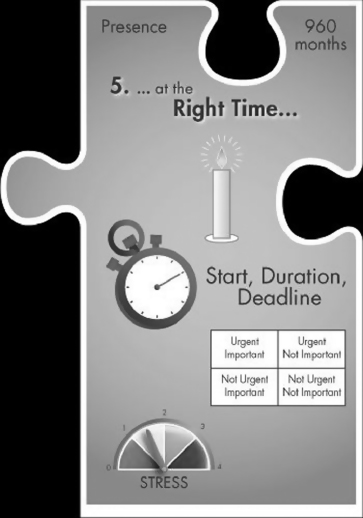Chapter 5
Dialogue Time and Space
Your work as a leader is to create environments where it is safe and highly valued to speak up and contribute different views.
—Linda Ellinor and Glenna Gerard1
Dialogues take place in time and space and good dialogue leaders manage these factors knowing that they are both of great importance. In this chapter we explore the elements of both time and space and share experiences where these factors made a difference in outcomes achieved.
Dialogue time refers to the fact it is time to dialogue versus communicate. Dialogue timing refers to the actual timing of the dialogue (e.g., start time, duration, finish time, and pace). In this chapter we cover both dialogue time and dialogue timing as well as other aspects related to time.
Dialogue Time
At our summer home in Lac Des Iles the boys around my age seemed to outnumber the girls 11 to zero. It wasn’t surprising therefore that my father used to impose a “quiet time” during which kids were meant to be quiet and parents could enjoy their happy hour watching the sunset over the lake. This quiet time reminded us of the importance of being quiet and proved to be a positive reminder later in life of taking time for silence. Somehow this silence also created space later on for more positive dialogue.

In addition to the importance of having quiet times, it is important that we reinstate dialogue times into ...

